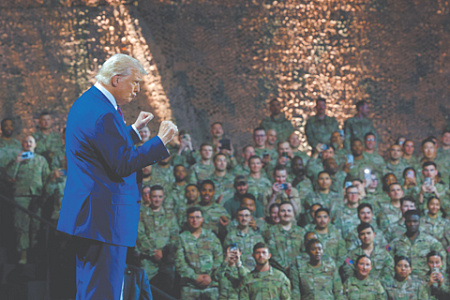
In a striking policy shift that has drawn both praise for its decisiveness and condemnation for its perceived weakness, U.S. President Donald Trump has unveiled a new dual-pronged strategy toward Russia and Ukraine. The announcement has immediately altered the political landscape, prompting the U.S. Congress to postpone a severe sanctions bill against Moscow and leaving international observers to debate whether the move ultimately strengthens Kyiv or Moscow.
At the heart of the new policy is an innovative mechanism for arming Ukraine. Instead of direct, free-of-charge provisions from Pentagon stockpiles, as seen under previous administrations, European NATO allies will now be required to purchase American weaponry. These allies can then transfer the U.S.-made arms to Ukraine or use them to replace their own military equipment sent to the front lines. This approach is widely seen as a classic Trump maneuver, simultaneously aiding Ukraine, bolstering the U.S. defense industry with new contracts, and pressuring European partners to address trade imbalances by increasing their purchases of American goods.
The second, more contentious element of Trump’s announcement is a 50-day ultimatum issued to the Kremlin to find a peaceful resolution with Ukraine. Should this deadline pass without an agreement, Trump has threatened to impose prohibitive tariffs designed to cripple Russia’s oil exports. This threat has effectively paused a Congressional bill that proposed even tougher secondary sanctions, including a 500% tariff on imports from countries buying Russian energy. Trump’s proposed 100% tariff is viewed as more realistic, though he may face legal challenges, as he would likely need to invoke the International Emergency Economic Powers Act (IEEPA), a move opponents could contest in court by arguing the conflict does not pose a direct threat to U.S. national security.
The reaction to Trump’s declaration has been deeply polarized. Within his own Republican party, while the arms industry has welcomed the new contracts, some influential figures have voiced dissent. Steve Bannon, a key ideologue of the ‘Make America Great Again’ (MAGA) movement, criticized the president for shifting focus from China to Russia. Meanwhile, Democratic opponents and media critics have fiercely attacked the 50-day timeline. CNN commentators argued it gives President Vladimir Putin a “green light” to intensify his summer offensive, while others described the strategy as a reactive and flawed approach.
Conversely, some analyses, such as one in The Washington Post, have framed the 50-day window as a necessary period to organize the complex logistics of arms shipments and to prepare for negotiations with buyers of Russian energy. This view suggests that with new air defense systems prioritized for delivery, Ukraine can hold its ground against Russian aerial attacks, framing Trump’s ultimatum as “good news for Ukraine and the cause of freedom.”
Official responses from the primary nations involved have been markedly cautious. Ukrainian President Volodymyr Zelensky offered a restrained statement, noting he “appreciates the willingness” to provide additional air defense capabilities. In Moscow, the Kremlin stated it is carefully studying the announcement. Presidential press secretary Dmitry Peskov described the statements as “very serious,” adding that Russia needs time to analyze the new U.S. position and that President Putin will comment if and when he deems it necessary.
